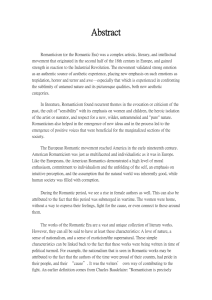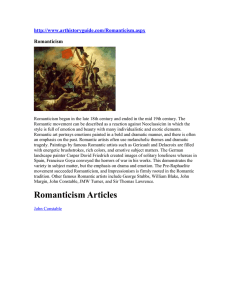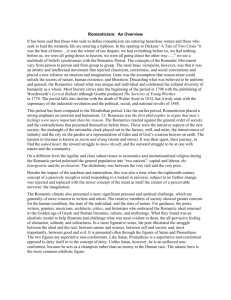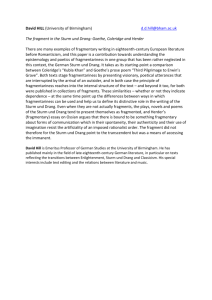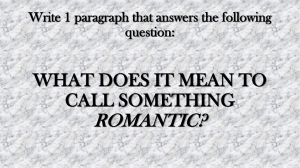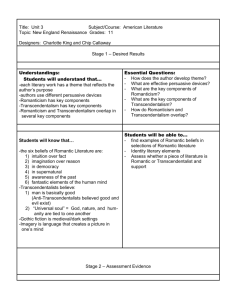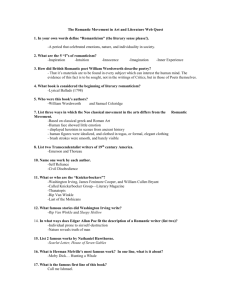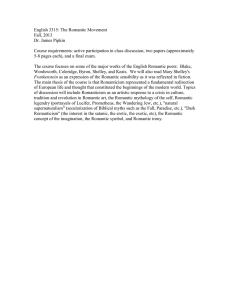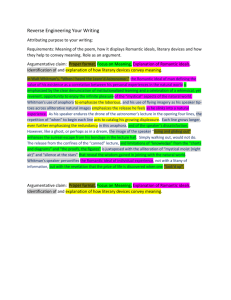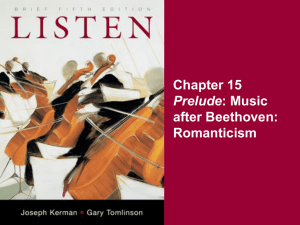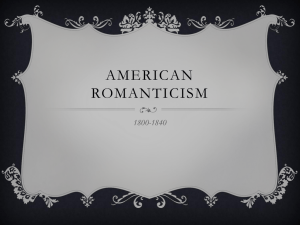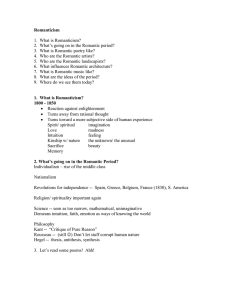Romanticism: Class Period 1
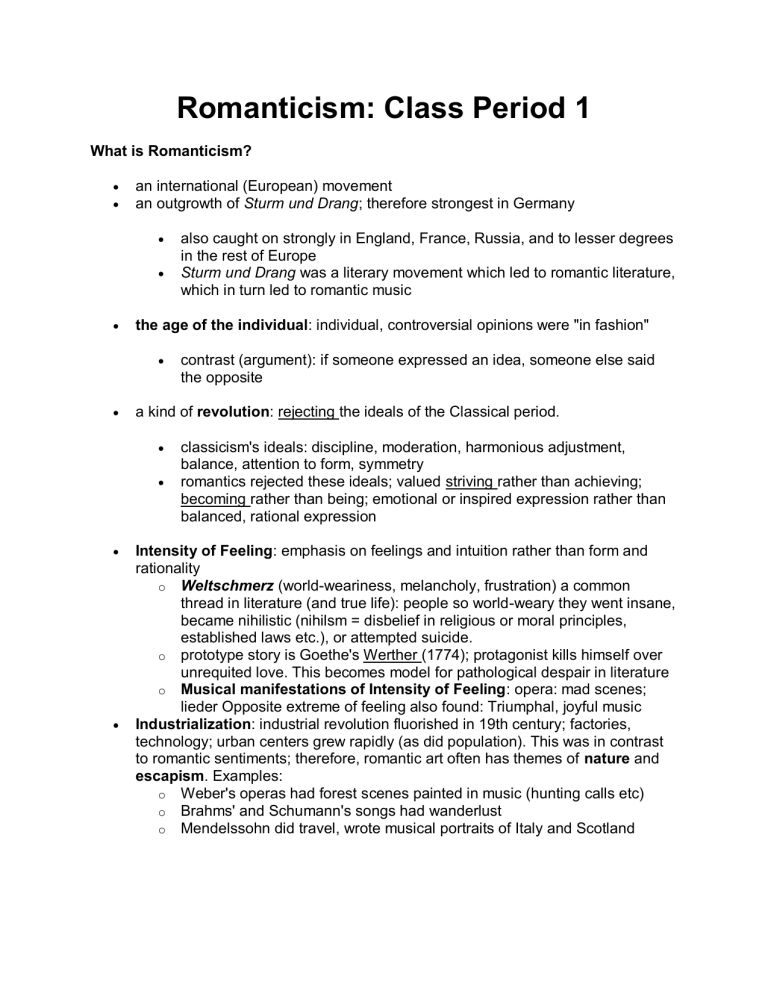
Romanticism: Class Period 1
What is Romanticism?
an international (European) movement an outgrowth of Sturm und Drang ; therefore strongest in Germany
also caught on strongly in England, France, Russia, and to lesser degrees in the rest of Europe
Sturm und Drang was a literary movement which led to romantic literature, which in turn led to romantic music
the age of the individual : individual, controversial opinions were "in fashion"
contrast (argument): if someone expressed an idea, someone else said the opposite
a kind of revolution : rejecting the ideals of the Classical period.
classicism's ideals: discipline, moderation, harmonious adjustment, balance, attention to form, symmetry romantics rejected these ideals; valued striving rather than achieving; becoming rather than being; emotional or inspired expression rather than balanced, rational expression
Intensity of Feeling : emphasis on feelings and intuition rather than form and rationality o Weltschmerz (world-weariness, melancholy, frustration) a common thread in literature (and true life): people so world-weary they went insane, o o became nihilistic (nihilsm = disbelief in religious or moral principles, established laws etc.), or attempted suicide. prototype story is Goethe's Werther (1774); protagonist kills himself over unrequited love. This becomes model for pathological despair in literature
Musical manifestations of Intensity of Feeling : opera: mad scenes; lieder Opposite extreme of feeling also found: Triumphal, joyful music
Industrialization : industrial revolution fluorished in 19th century; factories, technology; urban centers grew rapidly (as did population). This was in contrast to romantic sentiments; therefore, romantic art often has themes of nature and escapism . Examples: o o o
Weber's operas had forest scenes painted in music (hunting calls etc)
Brahms' and Schumann's songs had wanderlust
Mendelssohn did travel, wrote musical portraits of Italy and Scotland
